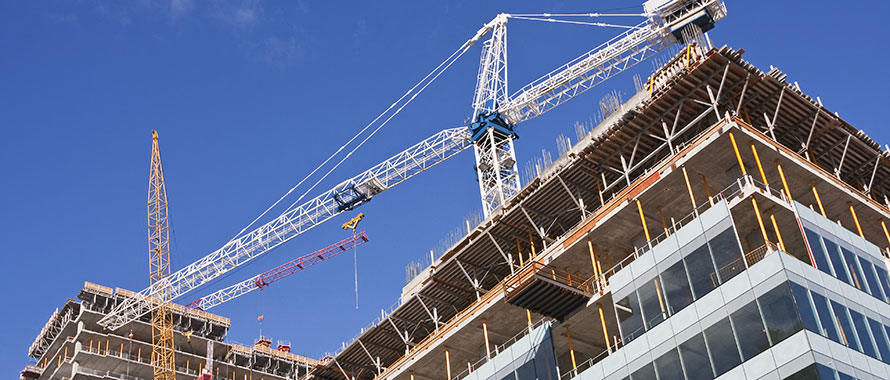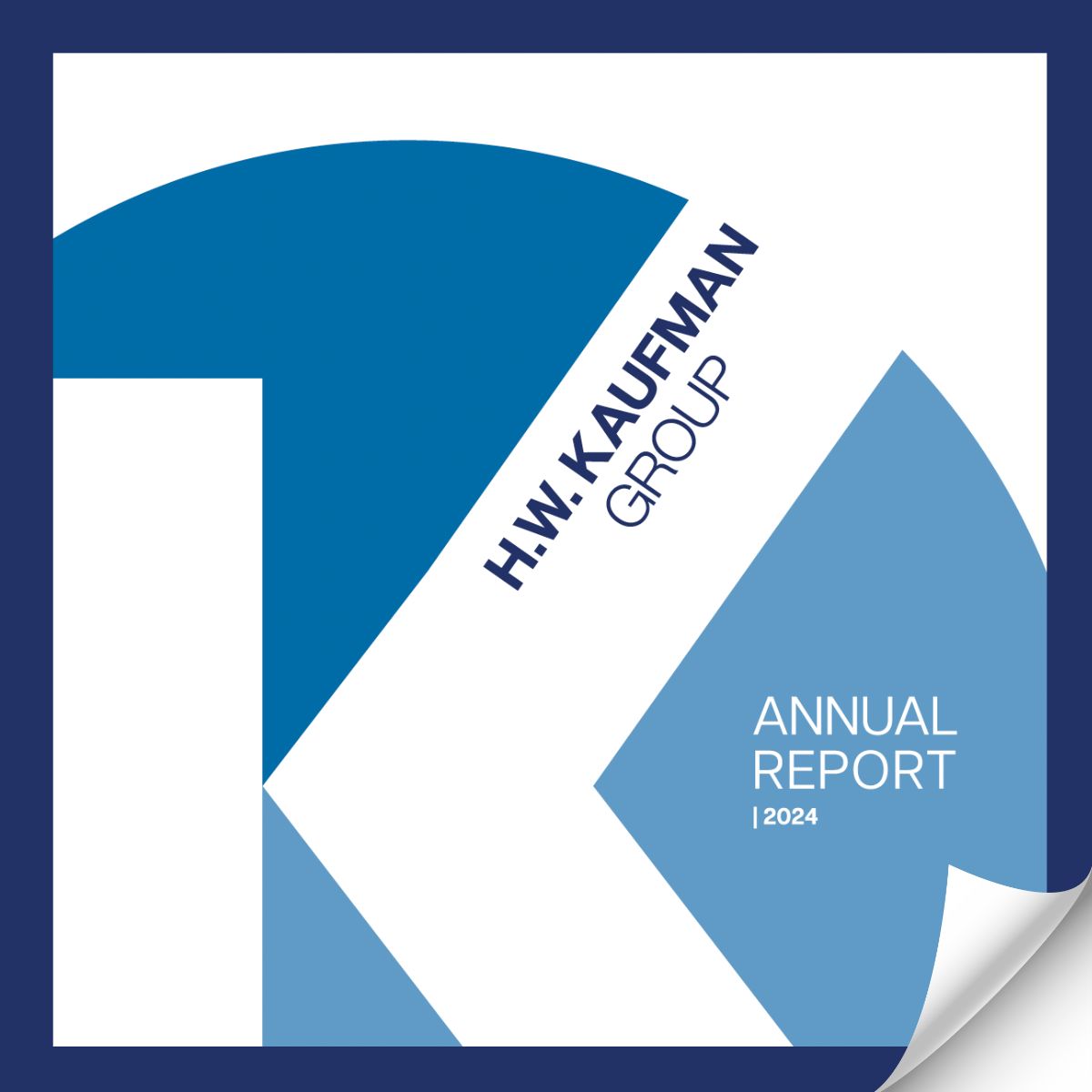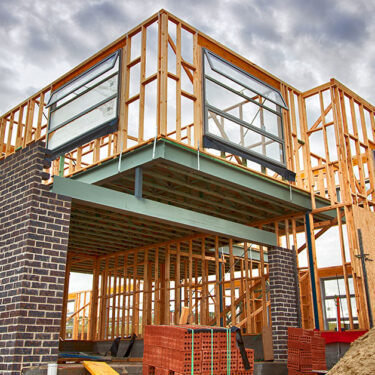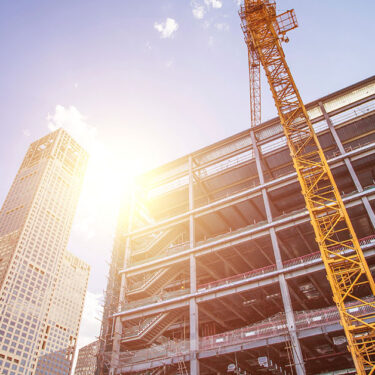A construction crane accident in New York City tragically injured 11 individuals and shut down traffic July 26 after the crane burst into flames 45 stories above ground. The top portion of the crane, which was lifting 16 tons of concrete at the time as it worked on a 54-story building in Midtown Manhattan, struck a neighboring building as it fell, the New York Times reported. Two firefighters were among those injured.
Featured Solutions
“When a crane goes down, it happens in a bad way. It is very high hazard,” said Adrian Smith, Managing Director, Broker, Casualty, Burns & Wilcox Brokerage, Chicago, Illinois. “When something goes wrong, it is usually in the news.”
Accident-related expenses could be covered by a construction company’s Commercial General Liability (CGL) Insurance which can cover third-party bodily injury and property damage claims. Excess liability insurance for crane business has becoming increasingly more difficult to obtain as insurance carriers have exited the class due to some of the high-profile incidents and large awards, Smith said. This particular accident “could have been a lot worse,” a fire official said in a news conference.

With the size of that crane, we could have been talking about dozens of fatalities. The fact that it did not happen is pretty miraculous.
This is especially true given that it occurred in the middle of the day and in a crowded area, said Nicholas Freeman, Associate Managing Director, Burns & Wilcox Brokerage, North Dallas, Texas. “It could have been exponentially worse,” he said. “You have untold numbers of construction workers on that site who could have been hurt, and the general public. In Midtown Manhattan, the streets are packed and so are the sidewalks. With the size of that crane, we could have been talking about dozens of fatalities. The fact that it did not happen is pretty miraculous.”
Tower crane collapses often catastrophic
Two days after the incident in Manhattan, another crane collapse made headlines in Baltimore, Maryland, after a crane fell onto I-70, injuring one construction worker and shutting down the highway, CBS News Baltimore reported July 28. “In the span of three days, you had two of these in the national headlines,” Smith said.
According to the U.S. Bureau of Labor Statistics, an average of 42 crane-related deaths occur each year, over half of which involve a worker being struck by an object or equipment. Crane collapses are also a concern in Canada, where the Ontario Ministry of Labour launched an initiative in 2021 to boost health and safety guidelines for tower cranes, Canadian Occupational Safety reported at the time. In July of 2021, five individuals were killed when a crane fell from a 25-story residential building in Kelowna, British Columbia, the Associated Press reported. Just days earlier, a crane collapsed on top of a downtown Toronto building, according to CNN.

A lot of insurance carriers do not want to insure tower cranes. It is very difficult to get capacity on excess limits.
According to Smith, companies that operate tower cranes may have difficulty obtaining high enough limits on their CGL Insurance. “A lot of insurance carriers do not want to insure tower cranes,” he said. “It is very difficult to get capacity on excess limits.”
High-profile crane collapses can worsen that situation, Smith said. “As soon as there is a big crane accident in the national news, it just brings the risk more to the forefront of underwriters’ consciousness,” he said.
Insurance concerns amid social inflation
Some of the most tragic crane collapses have led to major payouts. In April, a jury awarded over $860 million to the family of a Dallas, Texas, woman who was killed when a crane collapsed during severe weather and crashed through her apartment roof in 2019, NBC DFW reported. In March of 2022, a jury in Seattle, Washington, awarded $150 million to some of the victims of a 2019 tower crane collapse that killed four individuals and injured several others, KING 5 reported.
“Nuclear verdicts,” often defined as judgements or settlements of more than $10 million, are an increasing concern in this industry, Smith said. Average settlements have surged more than 65% over the past decade ending in 2022, Daily Business Review reported in April.

What is causing these inflated jury verdicts is social inflation … It is not slowing down. If anything, due to the re-opening of the court system post COVID, it is getting worse.
“The whole insurance industry has evolved over the last several years,” Smith said of the changing legal landscape. “If somebody was severely injured in a crane accident and it gets in front of a jury, that is where the nuclear verdicts can come in. What is causing these inflated jury verdicts is social inflation, which refers to rising litigiousness. It is not slowing down. If anything, due to the re-opening of the court system post-COVID, it is getting worse.”
This makes Excess Liability Insurance particularly relevant for construction companies, “whether or not they are doing work in a major city where there are skyscrapers,” Freeman said. “It is a very difficult class of business,” he explained. “The more companies can do to create a safe environment for workers and for the public, the better.”

Someone operating a crane at ground level and not necessarily in an urban setting may not have to carry the same limits as someone in Midtown Manhattan.
Many construction companies will need to layer multiple Excess Liability Insurance policies to achieve sufficient limits, Freeman said. The exact amount needed will vary based on the business and the type of work it conducts.
“When talking to companies like this that operate with more potential for severe loss, it is important to make sure they are completely covered from a limits standpoint,” he said. “Someone operating a crane at ground level and not necessarily in an urban setting may not have to carry the same limits as someone in Midtown Manhattan. Being aware of the operations and where they are taking place is extremely important when looking at the overall limits to carry.”
Avoiding coverage surprises
Working with a specialized insurance broker who can advise on OSHA guidelines and best risk management practices is a key step for companies. They can also discuss the company’s need for Workers’ Compensation Insurance to respond to worker injuries, Auto Liability Insurance in the event they operate a fleet with on-road exposure, and more.
“If any of their employees are hurt in a crane accident, there is definitely a Workers’ Compensation Insurance component to it,” Freeman said.
Construction companies should “work with a specialist wholesale broker who understands this class of business,” Smith added. “The Casualty Insurance market has generally stabilized, however, there are still high-hazard micro areas within the casualty segment that have firmed up — and the crane business is definitely one of those segments that is still a very challenging space,” he said.
Reviewing policies like CGL Insurance and Excess Liability Insurance is crucial to avoiding surprises after a claim arises, Freeman emphasized. “When a company is operating several stories off the ground in one of the most crowded cities in the world, they do not want to find out that they are inadequately covered or have a poorly written policy after the fact,” he said. “It is 100% imperative to discuss these topics with a broker ahead of time so that if something severe does happen, they are protected as much as possible. The time to correct things is during the quoting or renewal process, and not after a claim happens.”
While not every tower crane accident can be prevented, companies can mitigate their risk by maintaining their equipment and keeping maintenance logs, for example. “Many of these accidents can be prevented,” Freeman said. “When you are the owner of a crane company or the operator who is working 40 stories in the air, you kind of owe it to the public more than many other companies do to make sure your equipment is in fine working order and that you are doing everything you can to prevent this sort of thing from happening.”






